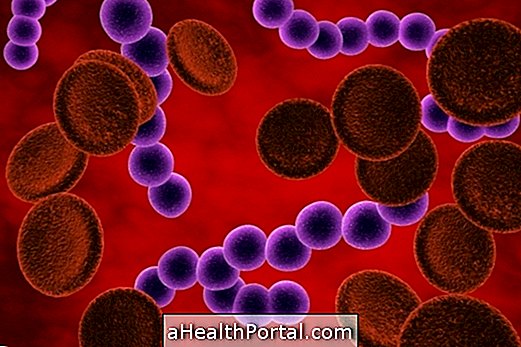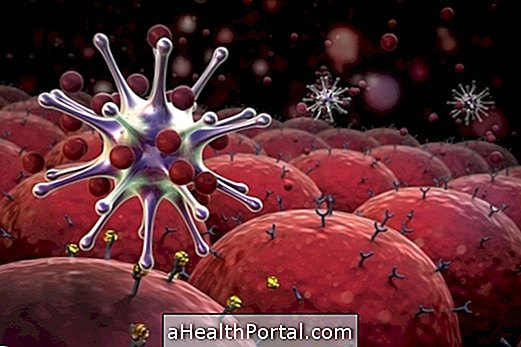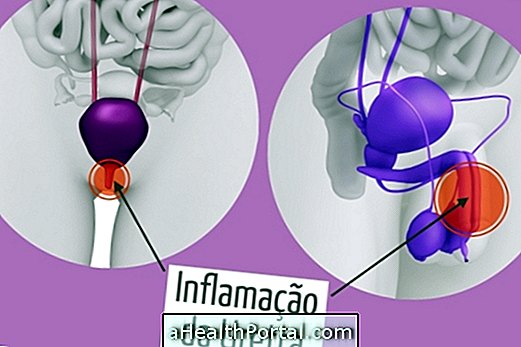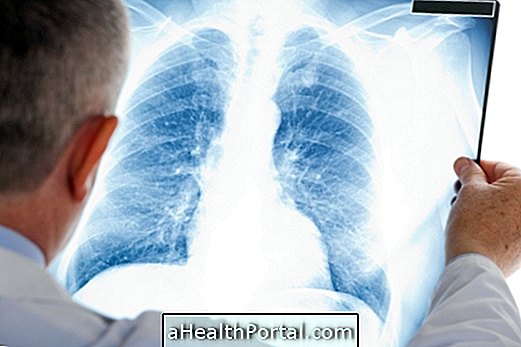Septicemia, or septicemia, is a widespread infection that occurs when bacteria, fungi or viruses enter the bloodstream, and spread throughout the body. Septic shock causes a decrease in blood pressure, making it difficult for blood and oxygen to enter the brain, heart, kidneys and other organs. This leads to signs and symptoms such as fever, shortness of breath, poor urine, bloating and changes in blood pressure, decreased blood pressure, high fever, low urine output and decreased blood platelets.
The treatment of septic shock is done with the person hospitalized in an Intensive Care Unit (ICU) with the use of drugs and antibiotics to regulate cardiac and renal functions and eliminate the microorganism. When treated on time, septic shock has a cure.

Symptoms of septic shock
The most common signs and symptoms of septic shock are:
- Heart rate greater than 90 bpm;
- Respiratory rate greater than 20 ipm (rapid breathing);
- Leukocytes above 12, 000 or below 4, 000 cells / mm3;
- Very low pressure;
- Swelling;
- Little urine;
- Decreased blood platelets;
- Difficulty in breathing;
- Loss of consciousness or mental confusion;
There may still be dizziness, fatigue, chills, and vomiting. The people most susceptible to septic shock are the hospitalized patients, as they have already compromised immunity, which may favor a local infection to develop into a generalized infection. Older, malnourished and post-surgical patients are also more likely to develop septic shock.
The symptoms of septic shock arise when the microorganism reaches the bloodstream and releases its toxins, which stimulate the person's immune system to produce and release cytokines and inflammatory mediators to counteract this infection. The toxins released by the microorganism damage the skin, causing the typical signs of an inflammatory process, such as edema, swelling and fever. If left untreated, excess cytokines and the high concentration of toxins may decrease the blood and oxygen supply in some organs, which can lead to failure of these organs.
Causes of septic shock
Septic shock can be caused by a number of factors, the most common being the migration of bacteria, fungi or viruses, which are located in a single organ into the bloodstream, spreading throughout the body and reaching other organs.
Other possible causes of septic shock are the presence of infected catheters and catheters, since they are hospital equipment that is in direct contact and daily with the hospitalized patient. Learn more about the causes of septic shock.

Diagnosis of septic shock
The diagnosis of septic shock is made based on the clinical examination of the person and on laboratory tests. A blood test is usually done to identify if the blood cell count is altered (red blood cells, leukocytes and platelets), if there are any problems with kidney function, what the oxygen concentration in the blood is, and if there is any change in the amount of electrolytes present in the blood. The other tests that the doctor may request are related to the identification of the microorganism causing the shock.
The diagnosis is conclusive for septic shock when the person has at least two of the following symptoms at the same time: fever or hypothermia (decreased body temperature), tachycardia (increased heart rate) or tachypnea (increased respiratory rate) and leukocytosis in the number of leukocytes) or leucopenia (decrease in the number of leukocytes).
How is the treatment done?
The treatment is done in ICU stay and requires the use of antibiotics mainly for the microorganism causing the shock to be eliminated. The antibiotic is defined by the physician from the identification of the microorganism and its susceptibility profile to the antibiotics or antifungal. Understand how the antibiogram is done.
In addition, the patient may need to breathe through appliances, receive blood or medications to regulate blood pressure and renal function. The patient diagnosed with septic shock should remain in the ICU until his condition is stable and the microorganism eliminated, thus being possible discharge. See more about treatment for septic shock.
Septic shock has a cure
Despite having a high mortality rate, septic shock is cured when identified at first symptoms and treatment is started immediately. However, when there is severe sepsis, which is when a certain organ malfunctions, affecting blood flow to some parts of the body, the condition may not progress to death if the person has other associated diseases.
























